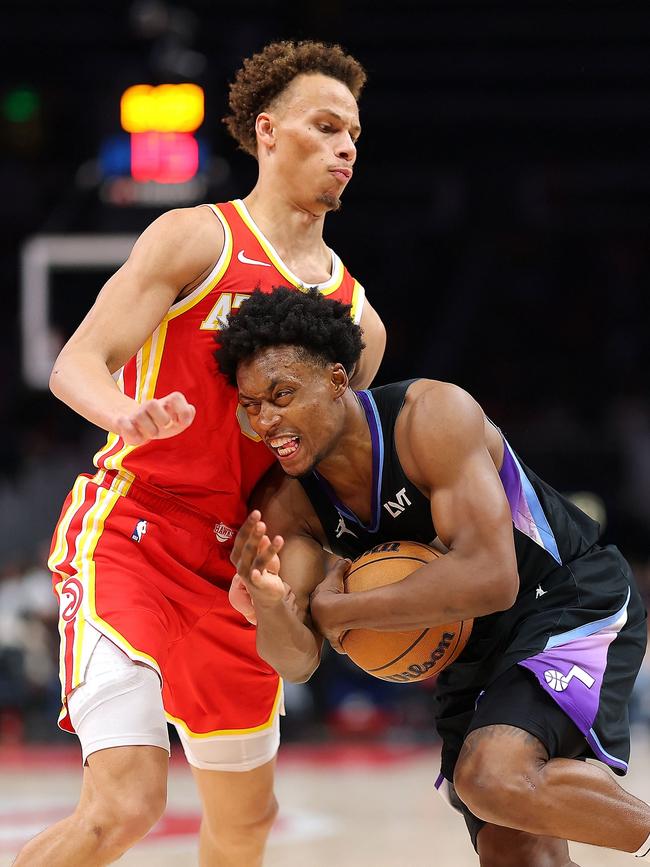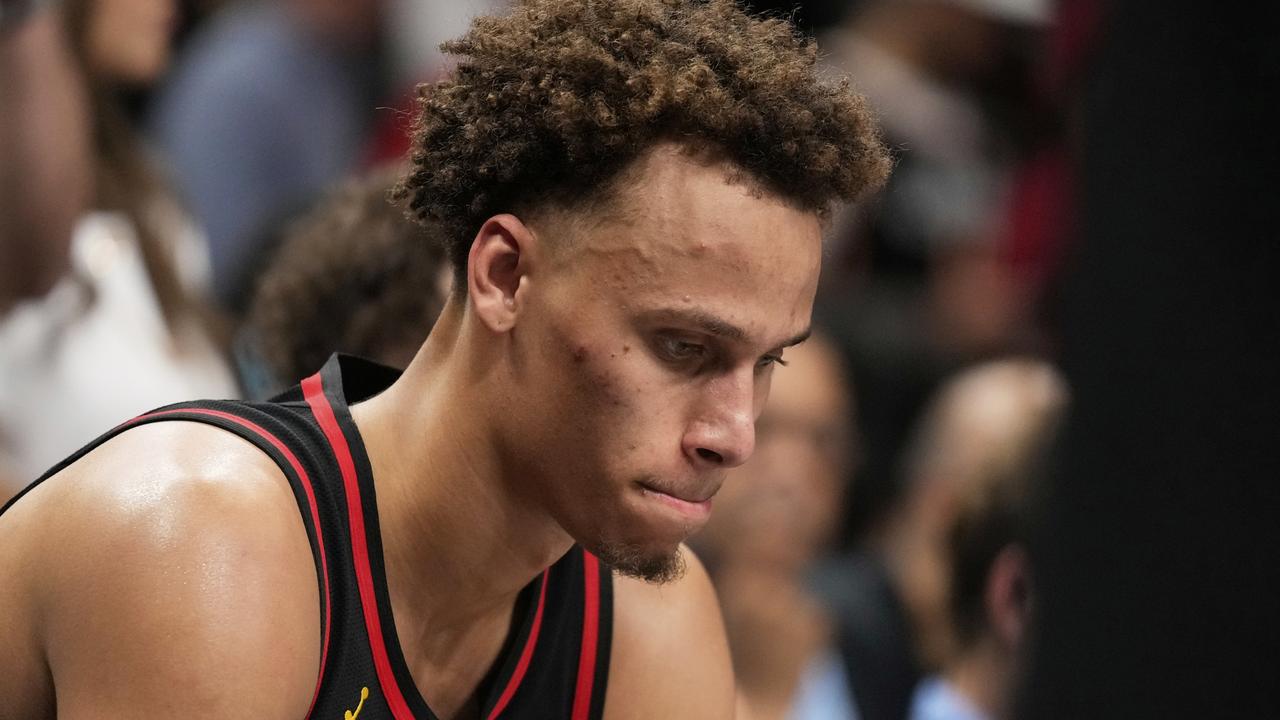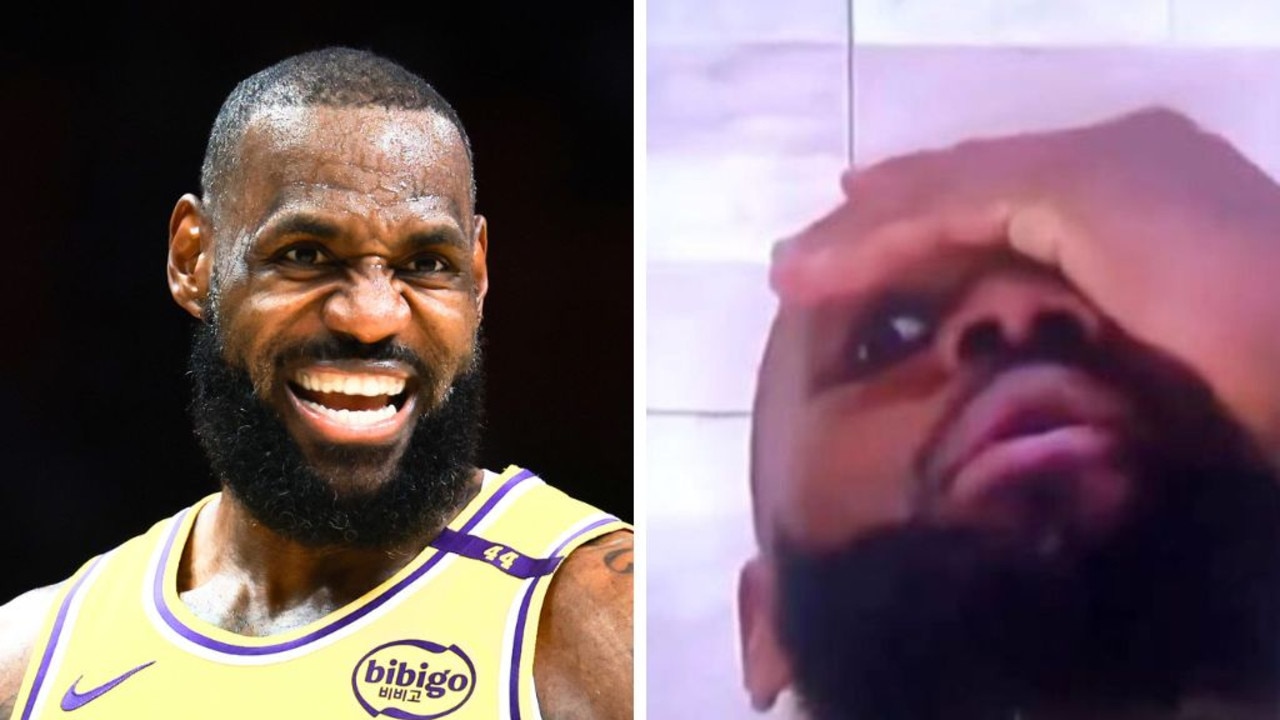Analysis: The history that could work against Dyson Daniels’ bid for NBA Defensive Player of the Year
Dyson Daniels’ milestone-laden breakout NBA season has put him in the top three in two major awards. But his record-breaking efforts reveal why history is against the brilliant young Boomer.

Basketball
Don't miss out on the headlines from Basketball. Followed categories will be added to My News.
Dyson Daniels should be the NBA’s Defensive Player of the Year.
And there’s a very real chance the young Australian Boomer could pair that honour with the league’s Most Improved Player gong.
The 22-year-old has been recognised for his stunning breakout season in Atlanta by securing his place among three finalists in the race for each of the awards.
And, while the narrative in the US appears heavily biased toward Golden State’s veteran agitator Draymond Green, Daniels’ historic season should be etched in history with the Hakeem Olajuwon Trophy.
Daniels arrived in Atlanta via an off-season trade from New Orleans – the team that made him the eighth overall pick in the 2022 NBA draft – and made an immediate impact.

Confidence derived from a superb Paris Olympic campaign and a driven off-season regime paid immediate dividends and the Bendigo beast became the perfect foil for the Hawks’ defensively challenged superstar Trae Young.
On his way to swiping 229 steals – the most in a single season in the 21st century – Daniels added a slew of historic marks to his growing resume.
Those made the headlines – and earned him the catchy nickname ‘Great Barrier Thief’ – but Daniels’ defensive contribution was so, so much more.
Perhaps his greatest achievement was the work he did to cover the defensive deficiencies of Young, who is both small and lacks effort and ability on that side of the ball.
Young’s defensive rating of 119.1 points conceded per 100 possessions was 520th – out of 572 players – last season. With Daniels as his foil, Young’s rating tightened to 114.6 and he rose nearly 100 spots to 423.

The Hawks were third last overall last season in defensive rating. They rose to a more respectable 18th this campaign, adding four more wins to finish with 40 and eighth in the East.
One of the historic milestones Daniels achieved during the season doubles as an indicator of the challenge he faces to win the race for DPOY.
Daniels became the first guard in NBA history to win multiple Defensive Player of the Month awards when he claimed the Eastern Conference gong in October/November and March.
But, therein lies the problem.
The Defensive Player of the Year award has almost exclusively been the domain of the big man – 17 of the last 20 have been won by either a centre or power forward.
Marcus Smart (2021-22) and Gary Payton (1995-96) are the only recognised guards to win the award since Michael Jordan in 1987-88.
Of course, veteran Warrior Green has the profile and notoriety as one of the greatest defenders in NBA history who previously won the award in 2017, while Cleveland’s Evan Mobley has developed into one of the league’s smartest and most physical defenders on a team that went 64-18 and finished top of the east.
Free of the shackles in New Orleans, Daniels rewarded the faith shown in him by Hawks coach – and new Australian Boomers adviser – Quin Snyder with exponential increases in almost every measurable statistic, putting him in the mix for the Most Improved Player trophy.
Daniels became a legitimate offensive threat, draining the three ball at a respectable 34 per cent in averaging two-and-a-half times more points than his previous campaign, more than doubled his steal numbers and averaged two more points and almost two more assists.
He has some tough competition for the award in LA big man Ivica Zubac, who became a nightly double-double threat on a Clippers team that went 50-32 and Detroit’s bona fide superstar Cade Cunningham, who was top-10 in points and top five in assists on the surprise packet Pistons.
More Coverage
Originally published as Analysis: The history that could work against Dyson Daniels’ bid for NBA Defensive Player of the Year





